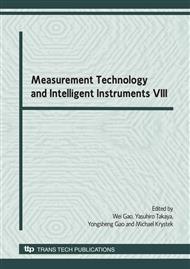p.121
p.125
p.129
p.133
p.137
p.141
p.145
p.149
p.153
Stability Derivatives Estimation of Unmanned Aerial Vehicle
Abstract:
The purpose of this research is to estimate the dimensional stability derivatives in linear dynamic model of a fixed-wing model-scale unmanned aerial vehicle (UAV) by real flight data logged by an onboard flight computer. The paper described the experimental setup, operation procedure of raw flight data, process of nonlinear least squares estimation, and cause-effect examination of impulse responses. The simulation-based results of the estimated model indicated a very good accuracy with real flight data. The linear longitudinal and lateral models are very helpful for designing the stability-augmentation system or autopilot for the UAV.
Info:
Periodical:
Pages:
137-140
Citation:
Online since:
June 2008
Authors:
Price:
Сopyright:
© 2008 Trans Tech Publications Ltd. All Rights Reserved
Share:
Citation:


